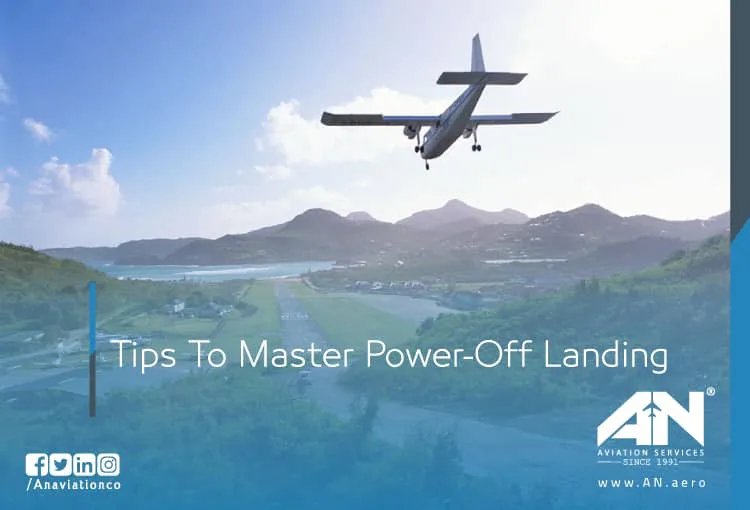
When it comes to aviation, mastering the art of a power-off landing is a crucial skill for every pilot. Whether it’s part of routine training or an unexpected emergency, executing a successful power-off landing demonstrates a pilot’s ability to manage the aircraft under challenging conditions. This skill ensures the safety of everyone onboard and serves as a testament to a pilot’s professionalism and preparedness.
In this blog post, we’ll explore what a power-off landing is, why it’s important, and the best tips for mastering this essential maneuver.
What Is a Power-Off Landing?
A power-off landing refers to a landing performed without the use of engine power. Typically, this maneuver is practiced as part of flight training to prepare pilots for scenarios such as engine failure or other emergencies where the engine cannot be relied upon.
Instead of relying on engine thrust, pilots must glide the aircraft to a safe landing spot using only altitude, airspeed, and proper technique. This requires a deep understanding of the aircraft’s capabilities, as well as calm, precise decision-making.
Why Are Power-Off Landings Important?
Power-off landings are not just a training exercise—they prepare pilots for real-life situations where engine power is lost during flight. Here’s why mastering this skill is vital:
Emergency Preparedness:
A sudden loss of engine power can be caused by mechanical failure, fuel exhaustion, or even severe weather conditions. Being well-versed in power-off landings equips pilots with the confidence to handle these emergencies safely.
Glide Control:
Executing a power-off landing sharpens a pilot’s ability to glide the aircraft, a critical skill for managing altitude, speed, and distance during emergencies.
Improved Decision-Making:
Pilots must quickly assess the best landing area, considering factors like wind direction, terrain, and obstacles. Practicing power-off landings hones these decision-making abilities.
Aviation Safety:
Power-off landing training contributes significantly to overall aviation safety, ensuring that pilots can protect lives and property when unexpected circumstances arise.
Tips to Master Power-Off Landing
If you’re a student pilot or looking to refine your skills, here are some essential tips to help you execute a power-off landing with precision:
1. Understand Your Aircraft’s Glide Performance:
Every aircraft has a specific glide ratio that determines how far it can travel without engine power. Learn this ratio and practice using it during training flights. Knowing how your plane behaves during a glide is key to making accurate judgments about landing spots.
2. Maintain Airspeed Control:
A stable airspeed is critical to maintaining the aircraft’s glide path. Too slow, and you risk stalling; too fast, and you may overshoot your intended landing area. Pay close attention to your airspeed indicator and keep it within the recommended range.
3. Pick a Suitable Landing Spot Early:
As soon as engine power is lost, look for the nearest safe landing area. Open fields, clear roads, or runways are ideal. Avoid areas with tall trees, power lines, or rough terrain. Once you select a spot, commit to it and adjust your glide path accordingly.
4. Practice Situational Awareness:
Being aware of your surroundings is critical during a power-off landing. Factors like wind direction, altitude, and nearby obstacles must be taken into account when planning your descent. Practice scanning the area quickly and efficiently.
5. Use Flaps Wisely:
Flaps can help you adjust your glide path and control your descent. Deploy them only when you’re confident about reaching your landing spot, as using them too early can reduce your glide distance.
6. Follow the Engine-Out Checklist:
Most aircraft come with an emergency engine-out checklist. Familiarize yourself with these steps and practice executing them swiftly. This checklist typically includes setting the best glide speed, attempting to restart the engine, and communicating with air traffic control if possible.
7. Stay Calm and Focused:
Panic can cloud your judgment in high-stress situations. Practicing power-off landings regularly will help you build confidence and remain calm if you ever face a real engine-out scenario.
The Role of Training
Power-off landings are an integral part of pilot training and are typically included in private pilot and commercial pilot certification programs. Flight instructors emphasize this maneuver to ensure pilots are fully prepared for the unexpected.
Simulated power-off landings are practiced at various altitudes and locations, with the instructor creating scenarios to test the pilot’s decision-making and execution. Over time, these exercises develop a strong foundation of skills that can be applied in real emergencies.
Real-Life Applications
While power-off landings are most often encountered during training, they’ve also played a significant role in real-world aviation. Stories of successful emergency landings—like Captain Chesley “Sully” Sullenberger’s Hudson River landing—highlight the importance of these skills. Although Sully’s landing involved controlled ditching rather than a power-off landing, his ability to glide and manage the aircraft during engine failure was a result of rigorous training.
Conclusion
Mastering the art of a power-off landing is one of the most critical skills a pilot can develop. By understanding your aircraft’s capabilities, maintaining situational awareness, and practicing regularly, you can handle engine-out scenarios with confidence and precision.
For pilots, preparation is everything. Power-off landing training not only enhances your skillset but also contributes to the broader goal of aviation safety. Remember, the key to success lies in staying calm, trusting your training, and making informed decisions when it matters most.

